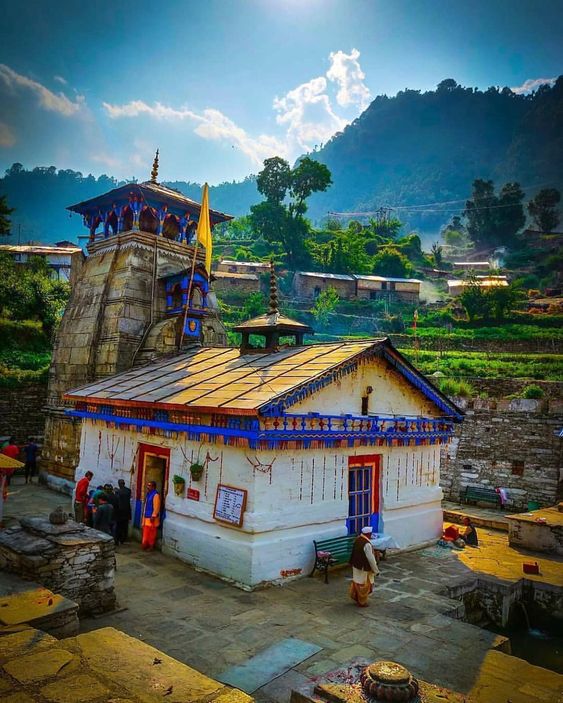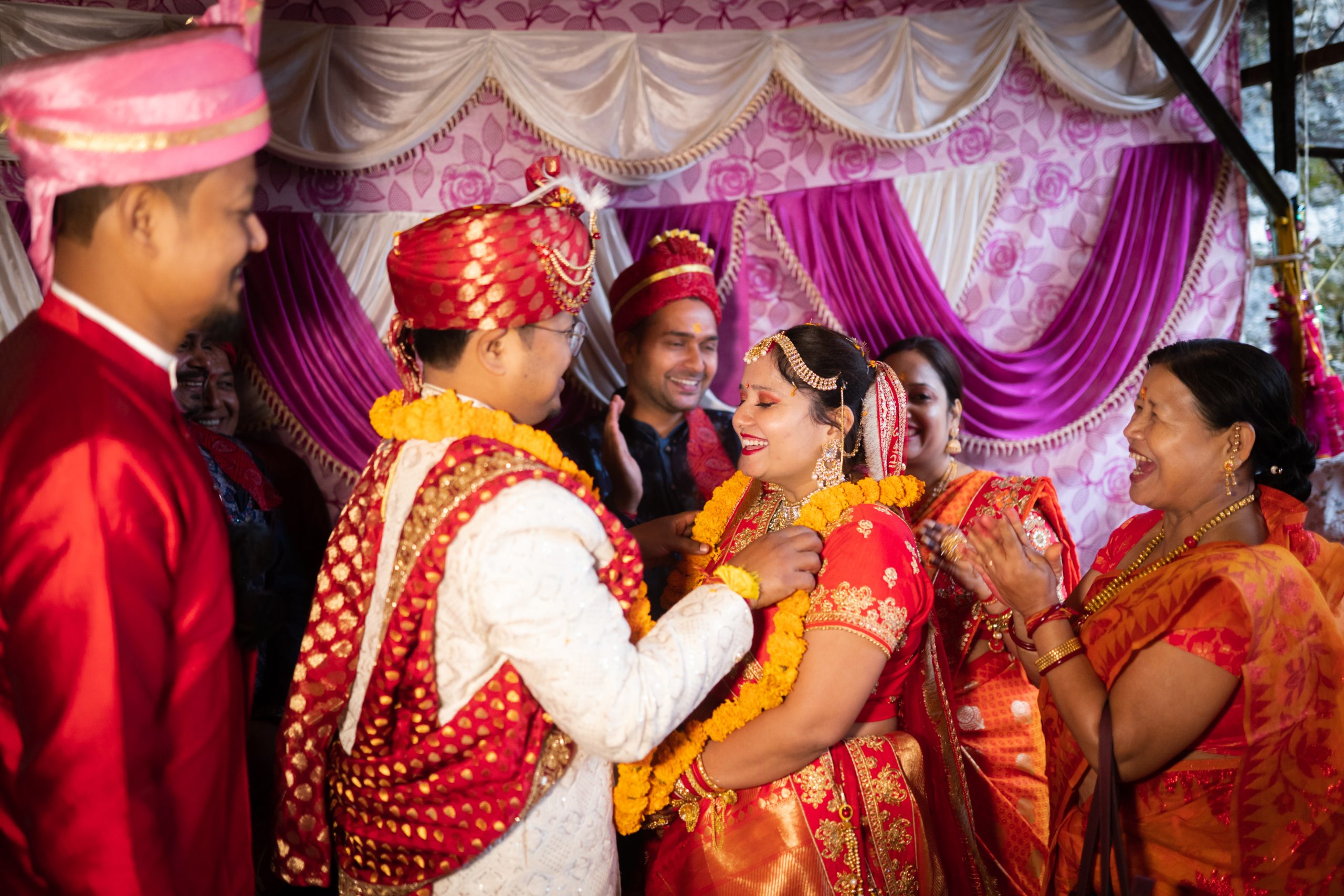The Triyuginarayan Temple is a Hindu temple located in the Triyuginarayan village in Rudraprayag district Uttarakhand. The ancient temple is dedicated to god Vishnu. Its fame is credited to the legend of god Shivas marriage to goddess Parvati witnessed by Vishnu at this venue and is thus a popular pilgrimage center. A special feature of this temple is a perpetual fire that burns in front of the temple. The flame is believed to burn from the times of the divine marriage. Thus the temple is also known as Akhand Dhuni temple.
 The temple courtyard is also the source of a water stream which fills three sacred bathing ponds kunds nearby. The kunds are said to be the place where the Hindu god Vishnu bathed.
The temple courtyard is also the source of a water stream which fills three sacred bathing ponds kunds nearby. The kunds are said to be the place where the Hindu god Vishnu bathed.
The word “Triyugi Narayan” is made up of three words: “tri” means three, “yugi” denotes a period of time (a Yuga), and “Narayan” is another name for Vishnu. Pilgrims have been offering wood to the fire in the havanakund fireplace since the three Yugas, hence the place is given the name Triyugi Narayan. In Hindu philosophy, a Yuga is the name of an epoch or era within a cycle of four ages. The four Yugas are the Satya Yuga (1728000 human years), the Treta Yuga (1296000 years), the Dvapara Yuga (864000 years), and finally the Kali Yuga (432000 years), which is the present Yuga.
The Akhand Dhuni temple gets its name from the legend of the eternal flame. Akhand means perpetual and Dhuni means flame.
According to Hindu mythology, goddess Parvati was the daughter of Himavat or Himavan, the personification of the Himalayas. She was the rebirth of Sati, the first wife of Shiva, who sacrificed her life when her father insulted Shiva. Parvati initially tried to allure Shiva by her beauty but failed. Finally, she won Shiva by practising rigorous penance at Gauri Kund, which is 5 kilometres away from Triyuginarayan. Pilgrims visiting Triyuginaryan temple also visit the Gauri Kund temple dedicated to Parvati, which is the base camp for trek to Kedarnath Temple. Mythology states that Shiva proposed to Parvati at Guptakashi before they got married in the small Triyuginarayan village at the confluence of Mandakini and SoneGanga rivers.
Triyuginarayan is believed to be the capital of Himavat. It was the venue of the celestial marriage of Shiva and Parvati during the Satya Yuga, witnessed in the presence of the holy fire that still burns eternally in front of the temple in a Havanakund or Agnikund, a fourcornered fireplace on the ground. Vishnu formalized the wedding and acted as Parvati’s brother in the ceremonies, while the creatorgod Brahma acted as the priest of the wedding that was witnessed by all the sages of the times. The exact location of the wedding is marked by a stone called Brahma Shila in front of the temple.The greatness of this place is also recorded in a sthalapurana, a scripture specific to a pilgrimage centre.
The scripture states that pilgrims who visit this temple believe that the ashes from the burning fire are holy and that they promote conjugal bliss.The water from four kunds (small ponds) is believed to have curative powers for infertility, and the ashes from the Havanakund are supposed to promote conjugal bliss, before the marriage ceremony.
The Triyuginarayan temple, which resembles the Kedarnath temple in architectural style, attracts a lot of devotees. The present shrine is also called the Akhand Dhuni temple. It is believed to have been built by Adi Shankaracharya.


